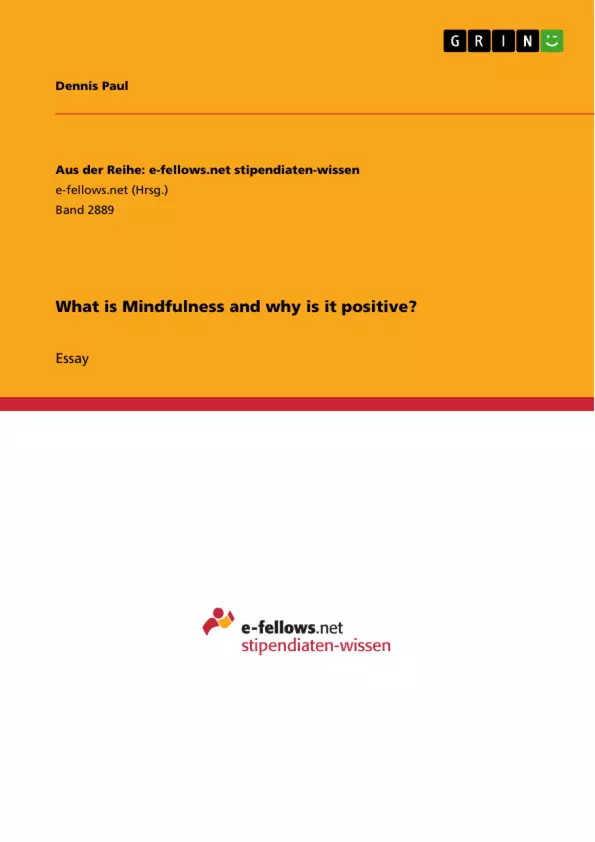Mindfulness is becoming increasingly important during the emergence of digitalization and issues of addiction to the all-pervasive media on the one side and increasing occupational workload and working hours on the other side. The application of mindfulness has gained much more popularity in the West in the past decades, which is generally contributed to Jon Kabat-Zinn and his application of mindfulness in the clinical context. Also in the field of positive psychology, which is concerned with human well-being and flourishing by focusing on positive experiences, traits, and virtues, concept and practice of mindfulness have been established as a focus of research regarding its potential for improving well-being.
Inhaltsverzeichnis (Table of Contents)
- The Construct of Mindfulness
- Conceptualization
- Characteristics
- Measurement
- Mindfulness Practice
Zielsetzung und Themenschwerpunkte (Objectives and Key Themes)
This text delves into the concept of mindfulness, exploring its definition, conceptualization, and practice. It examines how mindfulness, rooted in Buddhist traditions, has gained prominence in Western culture and has become a focus of research within positive psychology and sports psychology.
- Definition and Conceptualization of Mindfulness
- Key Characteristics of Mindfulness
- Measurement of Mindfulness
- Mindfulness in Western Culture and Research
- The Role of Mindfulness in Enhancing Well-being
Zusammenfassung der Kapitel (Chapter Summaries)
The Construct of Mindfulness
The chapter introduces mindfulness, defining it as a specific mode of consciousness characterized by intentional, non-judgmental attention to present experiences. It explores the roots of mindfulness in Buddhist traditions and its universality as an inherent human capacity. The chapter also delves into the conceptualization of mindfulness, contrasting it with concepts like insight meditation, Open Monitoring, and flow. It discusses the distinction between Eastern and Western perspectives on mindfulness, highlighting the potential for integration despite apparent contradictions.
Characteristics
This section elaborates on the key characteristics of mindfulness, outlining its core features as described by Brown and Ryan. It highlights aspects like clarity of awareness, non-conceptual and non-discriminatory awareness, flexibility, empirical stance, present-oriented consciousness, and stability of attention. The chapter also presents additional frameworks proposed by Bishop et al. and Shapiro et al., which emphasize the roles of self-regulation, attention, and attitude in fostering mindfulness.
Measurement
This chapter explores the measurement of mindfulness, focusing on self-reported trait measures like the Five Facet Mindfulness Questionnaire (FFMQ) and the Mindful Attention Awareness Scale (MAAS). It highlights the limitations of self-description as a measure of mindfulness, emphasizing the need for more comprehensive approaches that capture the complexity of the concept.
Schlüsselwörter (Keywords)
The key terms and concepts explored in this text include mindfulness, awareness, attention, present moment, non-judgmental observation, insight meditation, Open Monitoring, flow, self-regulation, attitude, intention, self-reported trait measures, Five Facet Mindfulness Questionnaire (FFMQ), Mindful Attention Awareness Scale (MAAS), Buddhist traditions, Western culture, positive psychology, sports psychology, well-being, and health.
- Citar trabajo
- Dennis Paul (Autor), 2018, What is Mindfulness and why is it positive?, Múnich, GRIN Verlag, https://www.grin.com/document/448654



